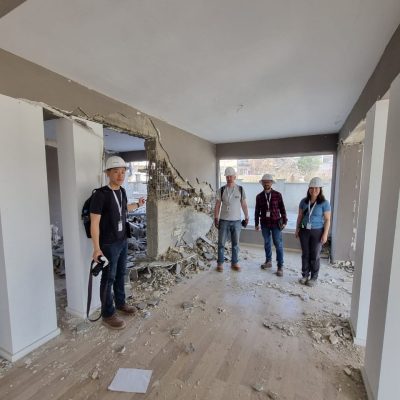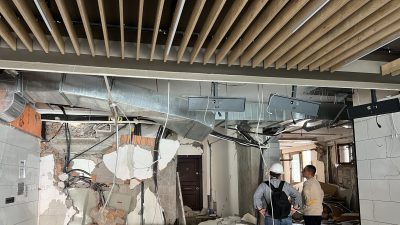March 2, 2023 – Day 3, Team 1
The February 6th seismic event that resulted in extensive destruction is recognized as the Kahramanmaraş Earthquake, as Kahramanmaraş was the closest major city to the initial quake’s epicenter. On day three, we took a minor detour near Tevekkelli on our way to Kahramanmaraş to observe a portion of the surface fault rupture that resulted from the 7.8-magnitude earthquake. Kim Bocanegra located it using Google Maps’ satellite view. The road had shifted approximately three meters, almost the width of a full lane! We were able to observe the fault rupture continuing on both sides of the road, extending into the farmland, and even walked along one of the ruptures.

Surface rupture through road near Tevekkelli
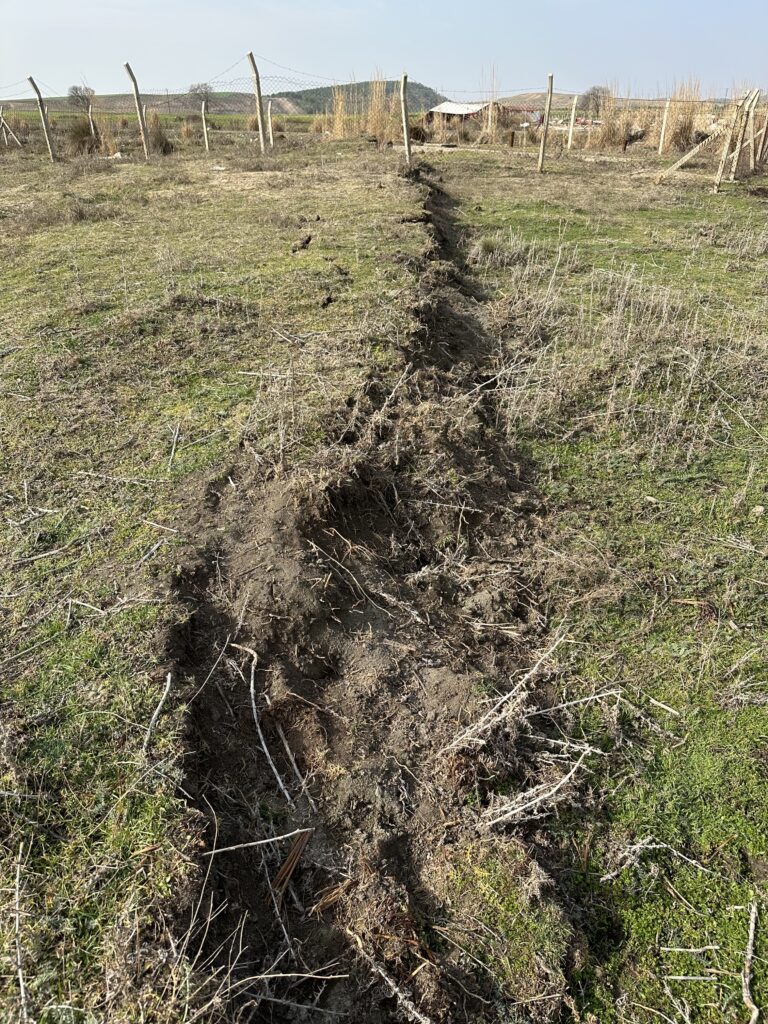
Surface rupture through road near Tevekkelli
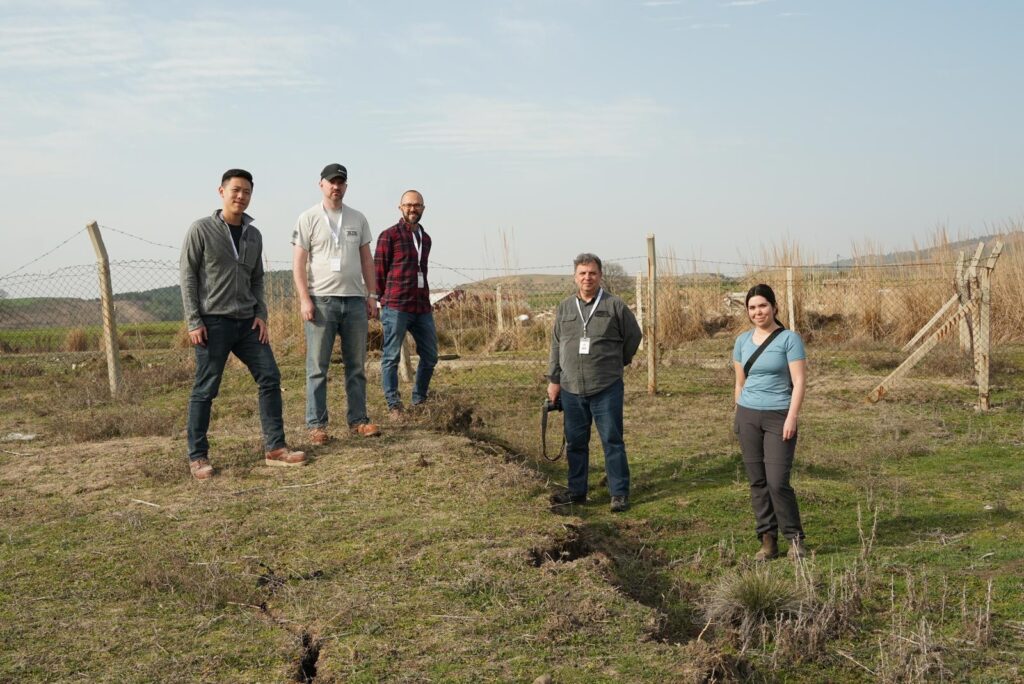
Jerry Luong, David Sommer, Jose Flores, Rafael Alaluf, and Kim Bocanegra at surface rupture near Tevekkelli
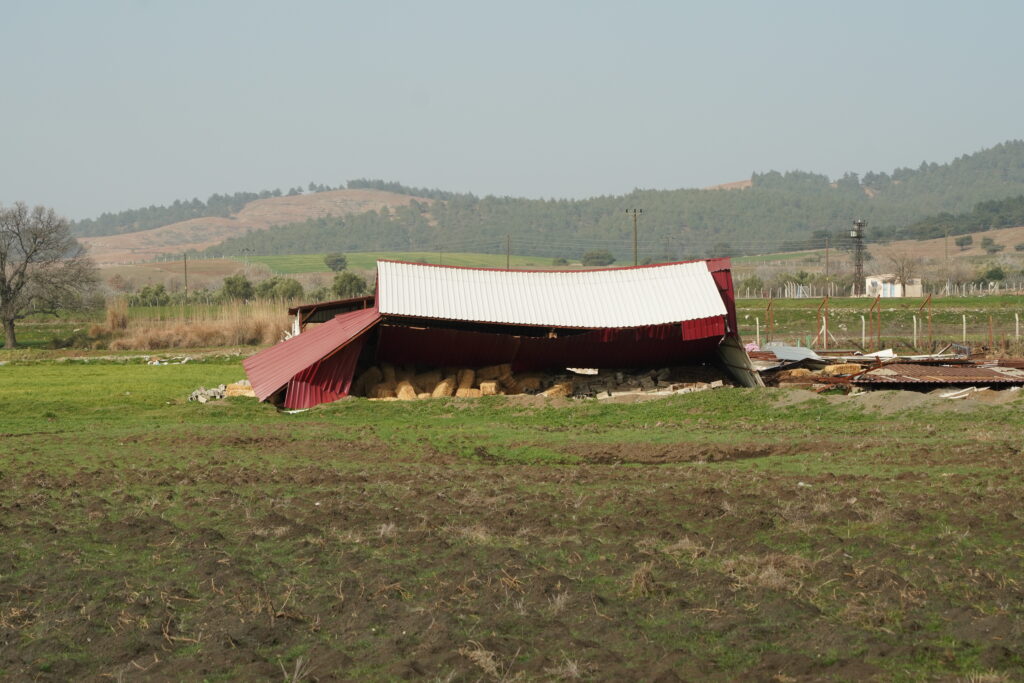
Collapsed structure near observed surface rupture in Tevekkelli
After examining the surface fault, we walked around the nearby farming town and were struck by the significant and widespread damage. Witnessing vacated houses with residents living in government-provided tents was sobering. The earthquake had a profound impact on the lives of these individuals and their communities’ resilience was put to the test.
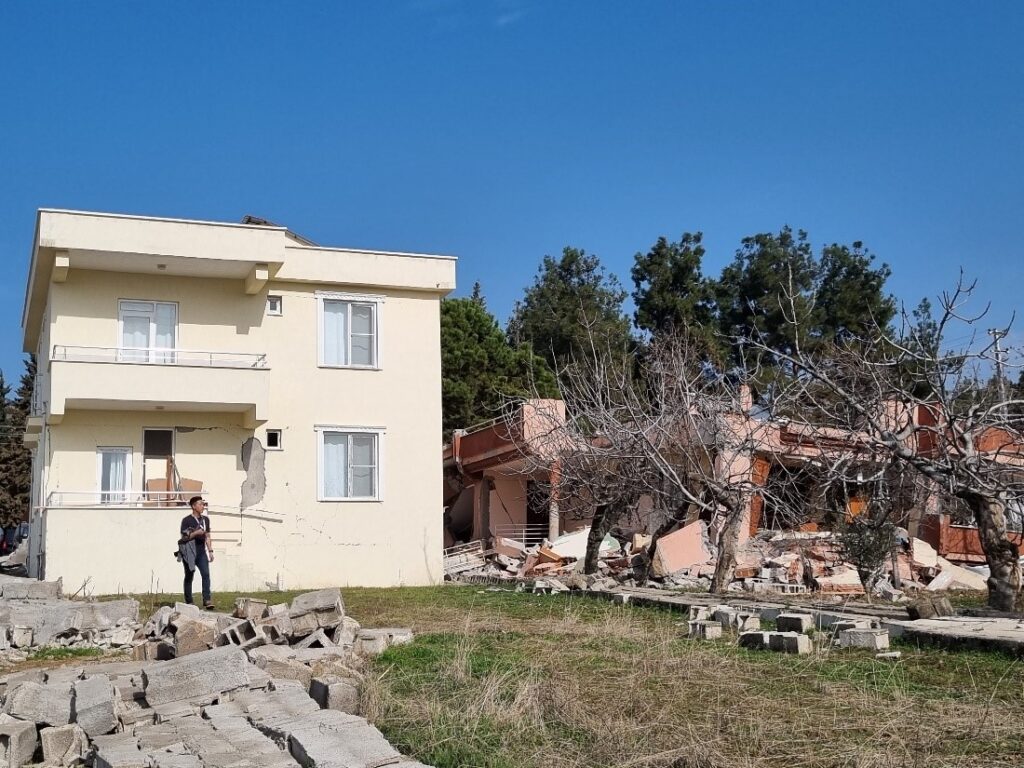
Damaged residential building that avoided collapse next to a completely collapsed building about a hundred feet from the fault line in Tevekkelli

Collapsed house at Tevekkelli
Next, we made our way to Kahramanmaraş. On the outskirts of town, we observed a cluster of four mid-rise buildings under construction. As we walked one of the 10-story buildings, we observed poor construction quality of the concrete, the unrestrained masonry infill that is typical in the area, and heavily damaged stairs that were not isolated from the building’s movement. Despite these issues, the building seemed to have performed to a collapse-prevention level during the earthquake, satisfying what is typically the intent of codes in the United States. Flexural hinges could be observed at the ends of beams and at the bases of walls. Even if the building can’t be operational, it still had some reserve strength to withstand another aftershock.

Apartment building under construction on the outskirts of Kahramanmaraş damaged during the earthquake

Kim, Rafael, Jerry and David discussing the performance of a damaged apartment building
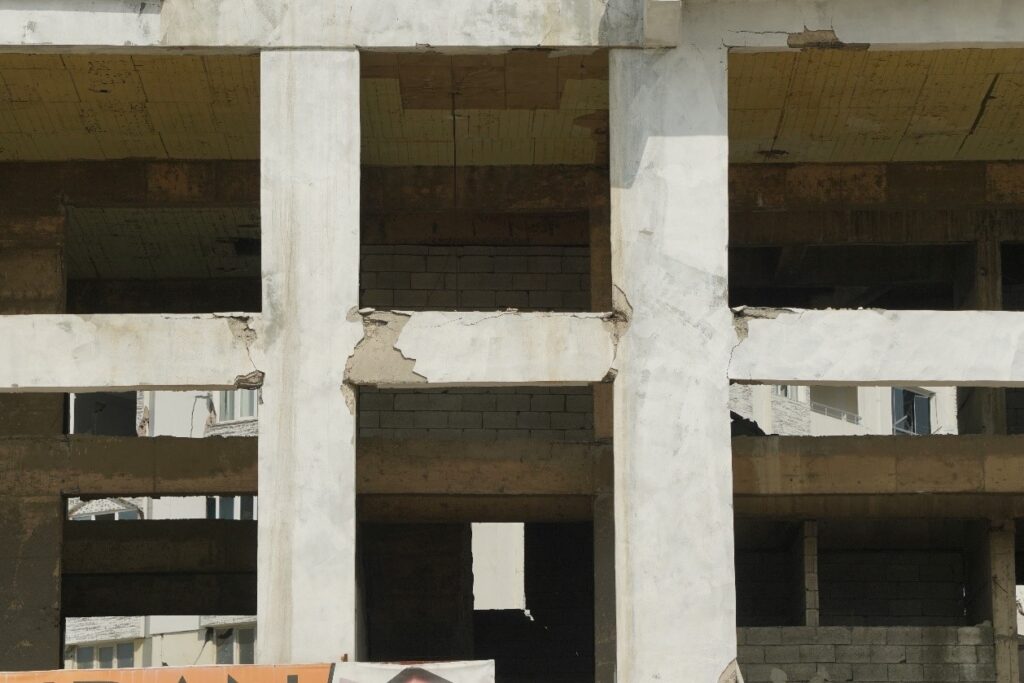
Observed hinging at beams in apartment building under construction
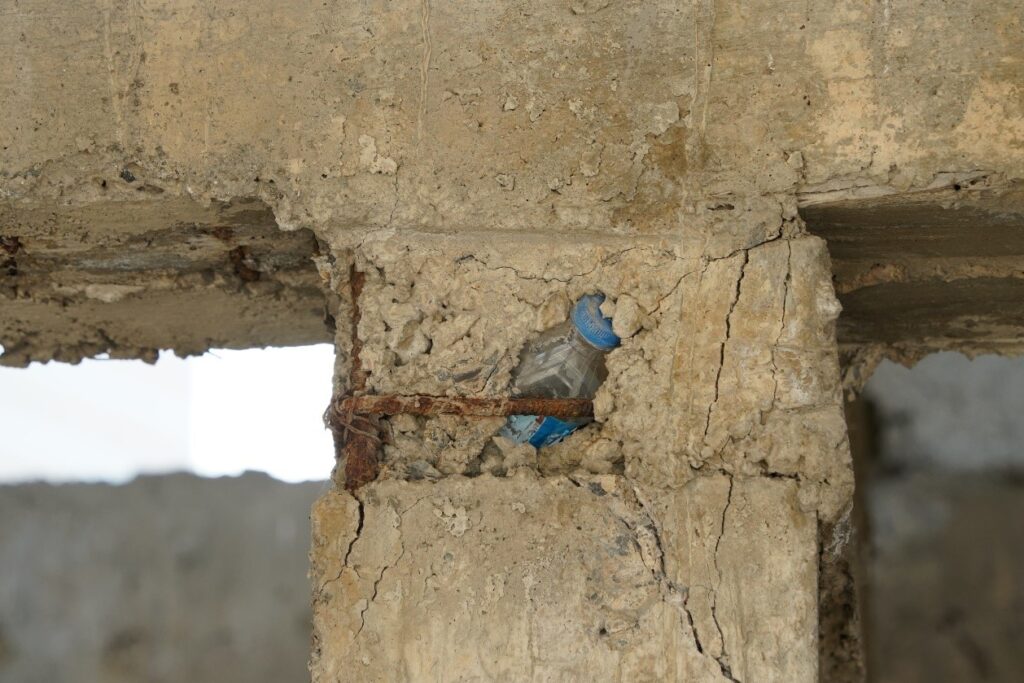
Poor construction quality observed in apartment building
The contrast between this building and the one next to it was striking. The exterior columns of the second building were severely damaged, with some of them broken off at the base and supporting the structure through the catenary action of the rebar. It seemed that the ties of the column stopped above the basement wall, and as such, the column failure happened at the wall due to poor confinement.

Severely damaged exterior concrete columns
Additionally, we noticed a concrete shear wall with vertical boundary zone reinforcing at its ends, but with no additional ties to confine it. The horizontal reinforcing of the wall was not anchored inside the boundary reinforcing and only had 90-degree hooks. As a result, the concrete wall experienced severe damage that could have been resolved with better detailing and a minimal increase in the amount of reinforcing by providing closed ties at the ends of the wall. It was shocking to see that the building was still standing and that after some redistribution of gravity loads to other members, the wall was still standing, being held up by these damaged, buckled bars. It should be noted that confining the boundary reinforcing at the ends of walls is customary practice in most modern seismic codes. The increase in construction cost is minimal and the behavior of the wall is expected to be far superior from what was observed at this location.

Severe damage to concrete shear wall
A few miles away uphill, we found several newer apartment buildings and observed numerous instances where infill walls were separating from the concrete frame, with some even falling out. Generally, it appeared that newer apartment complexes had better structural performance than older complexes.

Severe damage to infill walls observed at new apartment buildings
As we drove through the historic part of the city on the hillside, we noticed that the stock of older buildings in this area had also performed relatively well. We speculated about how the geological composition of this area—particularly the stiffer and rockier soils in the upper sections—may have played a role in the better performance of these buildings compared to their counterparts observed at the lower part of town.
In the city center, most buildings collapsed or were damaged to the point where demolition will be necessary. Amidst the rubble, a government building stood out due to its minimal observable damage. As we walked by, a team of contractors was taking a concrete core sample from one of the shear walls—almost as a public demonstration—to showcase how well the structure had performed. This building highlighted the importance of how well-designed seismic systems can protect essential facilities and provide much-needed services after a large earthquake when residents need them most.

Damaged buildings at Kahramanmaraş city center

Damaged buildings at Kahramanmaraş city center

Government building with minimal structural damage at Kahramanmaraş city center
Another example of the importance of essential facilities is a nine-story private hospital located in the city center, which suffered the collapse of its clay tile infill façade, exposing medical and testing equipment to the outside. The main structural beam and columns appeared to be fine, which would permit the building to function, however, the disruption due to failure of non-structural components was too great. The hospital’s interior was severely affected, with most of its contents strewn about. At the site we were told that this hospital was one of the best equipped hospitals in town, but unfortunately was not providing a much-needed service after the devastating earthquake. The importance of nonstructural performance during seismic events has a profound impact on a community’s ability to respond to emergencies.

David, Rafael, and Jose observing the severe nonstructural damage to a private hospital building in Kahramanmaraş


